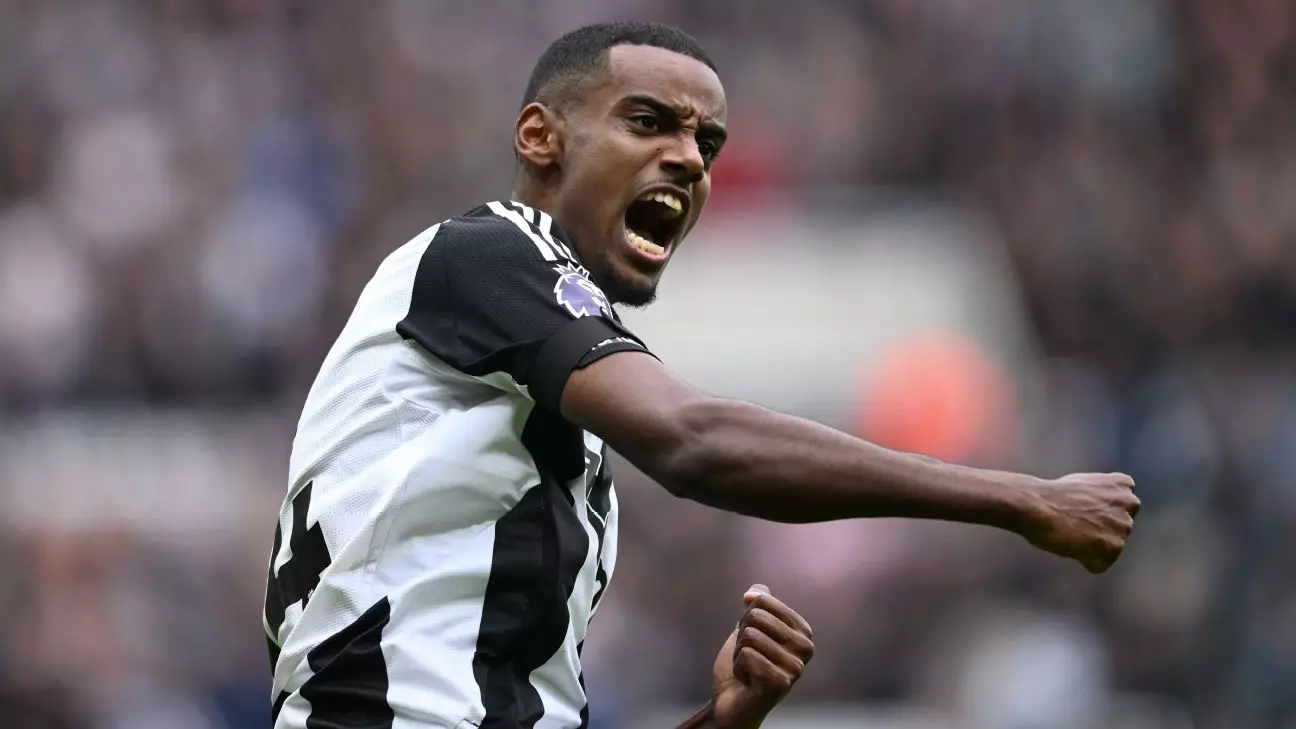The world of football is always buzzing with transfer rumors, speculations, and hot takes on player movements. As the January transfer window unfolds, several players have found themselves under the spotlight. Notable names such as Newcastle United’s Alexander Isak and Manchester United’s Kobbie Mainoo have emerged as sought-after talents, eliciting interest from some of the biggest clubs globally. This piece delves into the latest transfer scenarios, exploring the motivations behind these pursuits and their implications for the involved clubs.
In recent weeks, Alexander Isak has transformed into one of the most prolific strikers in the Premier League with Newcastle United. Scoring seven times in his last five appearances, Isak’s prowess in front of goal has captured the attention of top European clubs, particularly Barcelona. Reports from Spanish media outlets suggest that the Catalan giants view Isak as a potential successor to their stalwart forward, Robert Lewandowski. However, despite Barcelona’s interest, logistical challenges loom large. Financial constraints are a significant hurdle, as the club struggles to balance its books while pursuing new talents. The Magpies are reportedly keen on a hefty £100 million for their star, a figure that may be prohibitive for Barcelona given their current economic state.
Isak’s situation underscores a broader trend of clubs seeking young, dynamic forwards while attempting to rejuvenate their squads. With Isak riding a wave of form, he remains an attractive asset not merely for Barcelona but for a plethora of clubs aiming to bolster their attacking options.
Turning to the midfield, 19-year-old Kobbie Mainoo of Manchester United has also captured attention, particularly from Chelsea, who appear to be making a surprise move for the young talent. The midfielder has reportedly stalled contract negotiations with United, leading to concern about his long-term future at the club. Valued at around £60 million, Mainoo’s profile is intriguing for a Chelsea squad looking to integrate youthful vigor into their tactics. According to sources, United’s manager, Ruben Amorim, is eager to retain Mainoo, who he believes is continuously improving. Meanwhile, the club also navigates Premier League regulations on profit and sustainability, making it imperative to consider offloading some talents.
Mainoo’s experience at such a young age could add significant depth to Chelsea’s midfield, and as discussions progress, it will be fascinating to see how this plays out amidst the backdrop of competing interests from other clubs.
Barcelona’s interest isn’t limited to Isak; the club is reportedly eyeing AC Milan’s Rafael Leão as well. However, internal discussions have arisen regarding the player profiles; coaching staff are concerned about having multiple forwards with similar playing styles such as Leão and Lamine Yamal. This highlights a critical aspect of player recruitment—assessing not just the quality but the compatibility of new signings within an existing squad framework. This move would require not only financial maneuvering but also careful evaluation of how to balance squad dynamics while addressing defensive liabilities.
As part of their strategy, Barcelona is also contemplating offloading players like Ronald Araújo and Ansu Fati to manage their salary cap and make way for new signings. The interconnectedness of transfers—whereby one deal may necessitate another—exemplifies the complex landscape clubs navigate during transfer windows.
The ongoing search for young talent has not confined itself to the UK. Clubs such as Arsenal, Liverpool, and Manchester United have joined forces in monitoring Joâo Gomes from Wolverhampton Wanderers. The Brazilian midfielder, despite playing for a club under threat of relegation, has displayed impressive form that has caught the eye of top clubs. His current contract, lasting until 2028, puts Wolves in a strong bargaining position as they look to fend off interest.
The increased scrutiny on Gomes reflects a broader strategy amongst elite clubs to invest in young, promising players who could serve their teams for years, thereby reducing the need for frequent transfers.
As clubs prepare for the second half of the season, many are looking to make strategic adjustments through timely acquisitions. From Newcastle’s determined efforts to fend off competition for their key players to Chelsea’s foray into the market for young talent, these moves exemplify the shifting dynamics of contract negotiations and player valuations. The upcoming weeks promise a flurry of activity as clubs assess their needs and make calculated decisions to enhance their squads.
As the January transfer window progresses, the anticipation surrounding the fate of these players fuels discussions among fans and analysts alike. Who will emerge as the next big signing and which clubs will successfully navigate their financial and strategic challenges? The answers will unfold in this winter of unprecedented possibilities in the football transfer market.

Leave a Reply